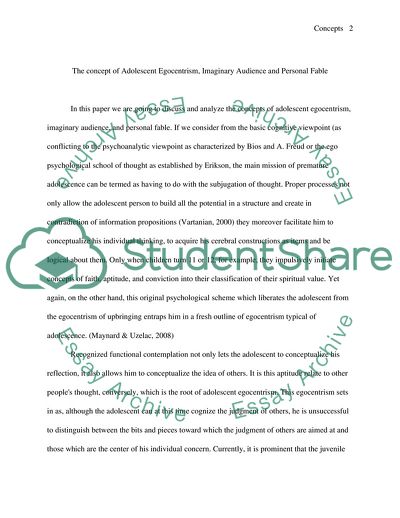Cite this document
(Adolescent Egocentrism, Imaginary Audience and Personal Fable Essay Example | Topics and Well Written Essays - 1250 words, n.d.)
Adolescent Egocentrism, Imaginary Audience and Personal Fable Essay Example | Topics and Well Written Essays - 1250 words. https://studentshare.org/psychology/1784946-concepts-of-adolescent-egocentrism-imaginary-audience-and-personal-fable
Adolescent Egocentrism, Imaginary Audience and Personal Fable Essay Example | Topics and Well Written Essays - 1250 words. https://studentshare.org/psychology/1784946-concepts-of-adolescent-egocentrism-imaginary-audience-and-personal-fable
(Adolescent Egocentrism, Imaginary Audience and Personal Fable Essay Example | Topics and Well Written Essays - 1250 Words)
Adolescent Egocentrism, Imaginary Audience and Personal Fable Essay Example | Topics and Well Written Essays - 1250 Words. https://studentshare.org/psychology/1784946-concepts-of-adolescent-egocentrism-imaginary-audience-and-personal-fable.
Adolescent Egocentrism, Imaginary Audience and Personal Fable Essay Example | Topics and Well Written Essays - 1250 Words. https://studentshare.org/psychology/1784946-concepts-of-adolescent-egocentrism-imaginary-audience-and-personal-fable.
“Adolescent Egocentrism, Imaginary Audience and Personal Fable Essay Example | Topics and Well Written Essays - 1250 Words”. https://studentshare.org/psychology/1784946-concepts-of-adolescent-egocentrism-imaginary-audience-and-personal-fable.


